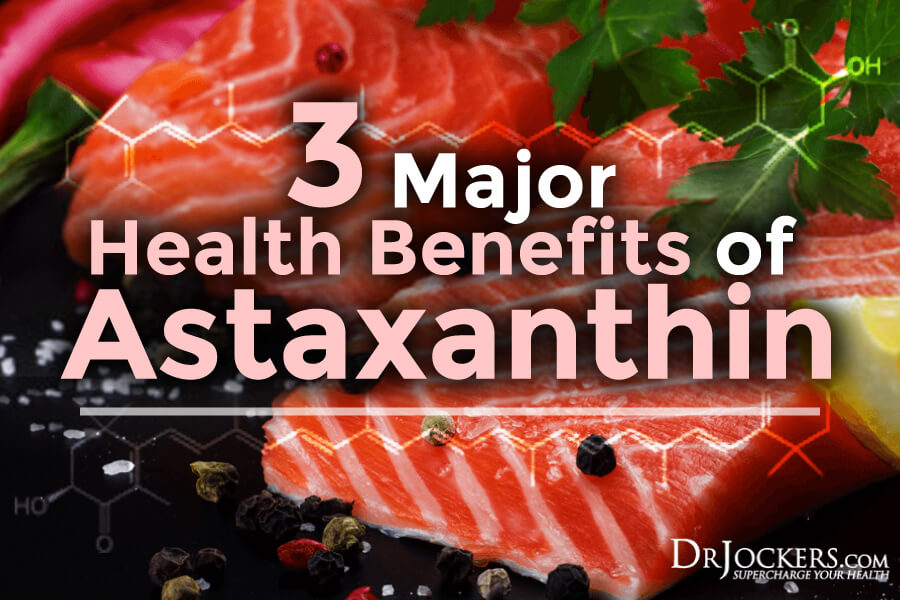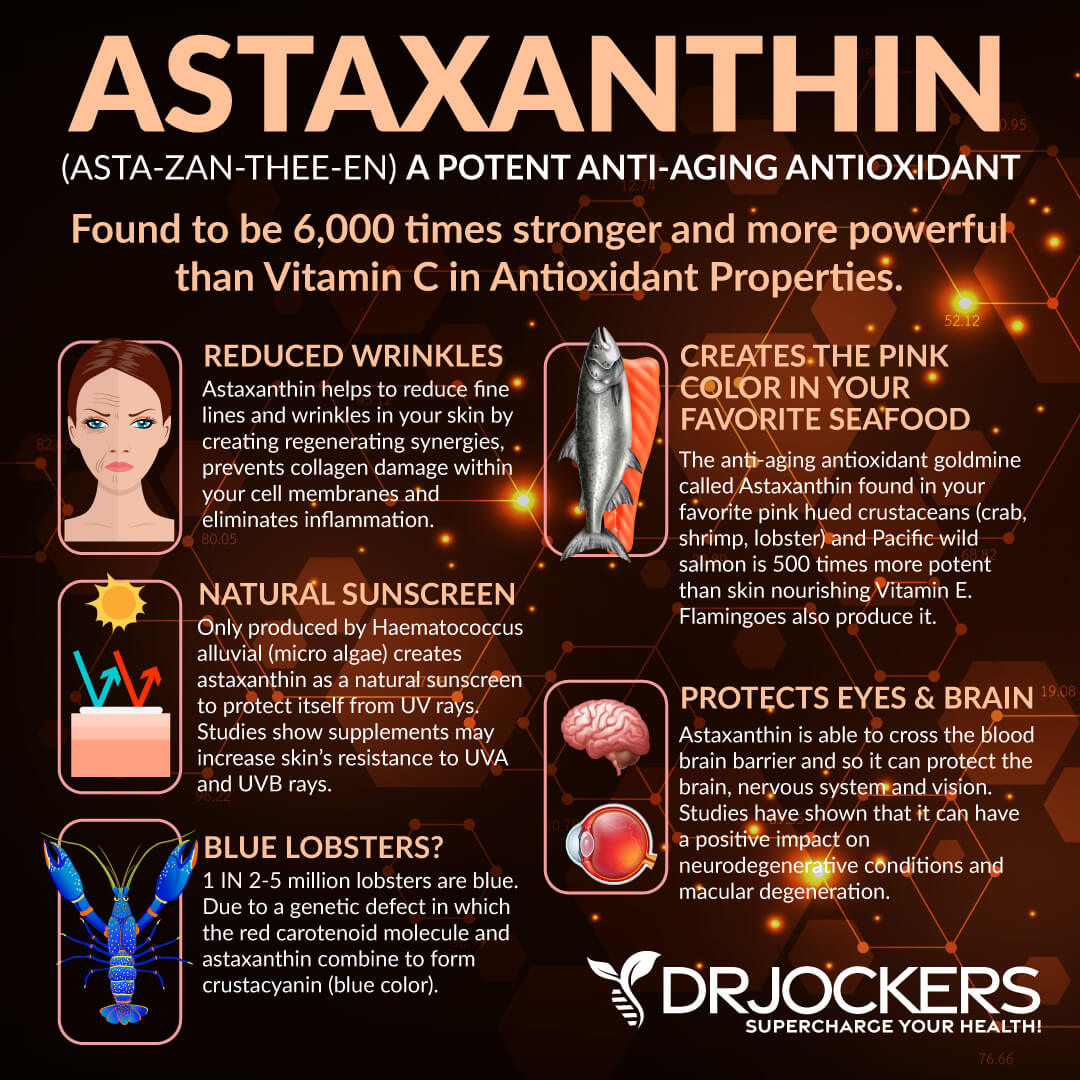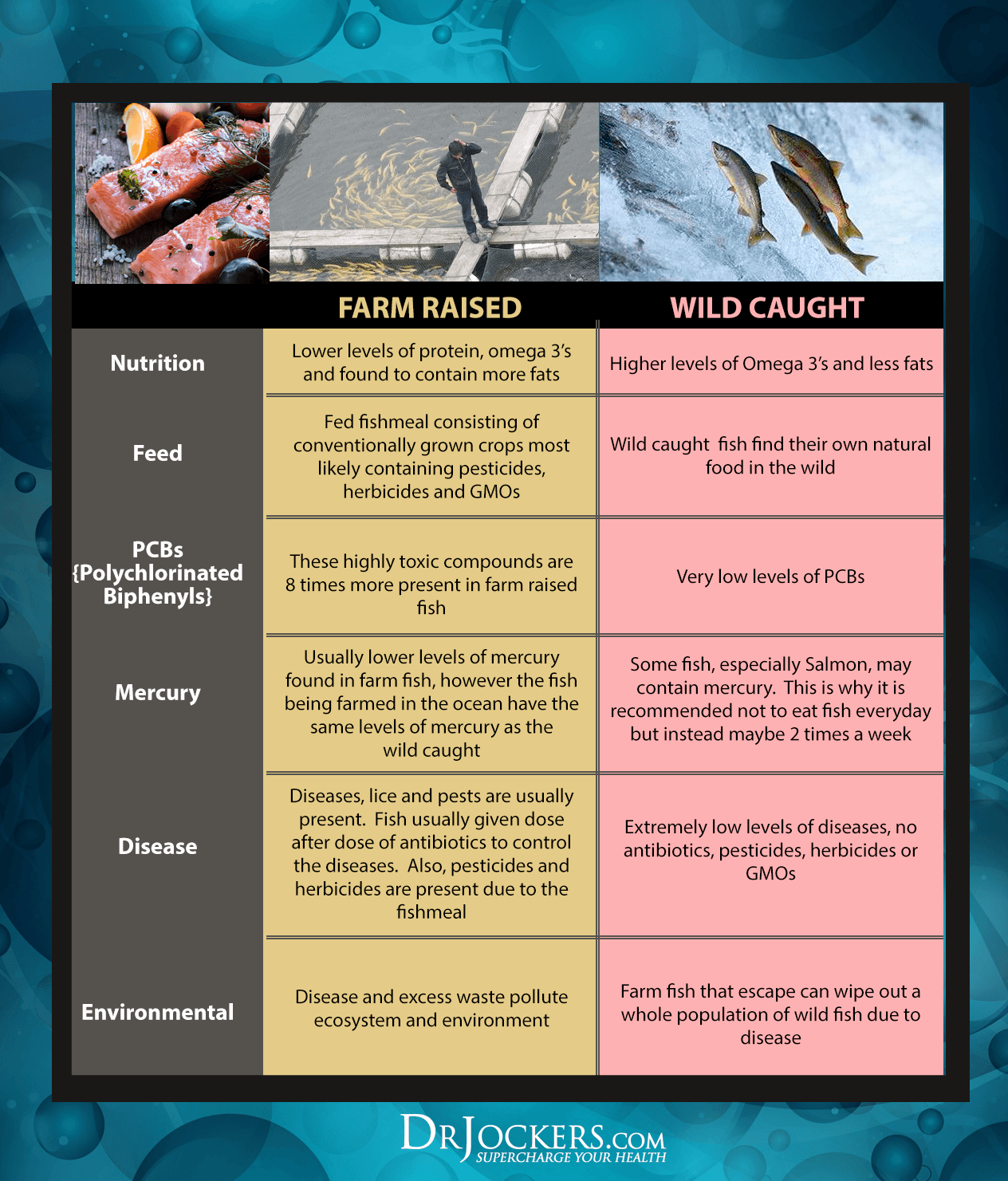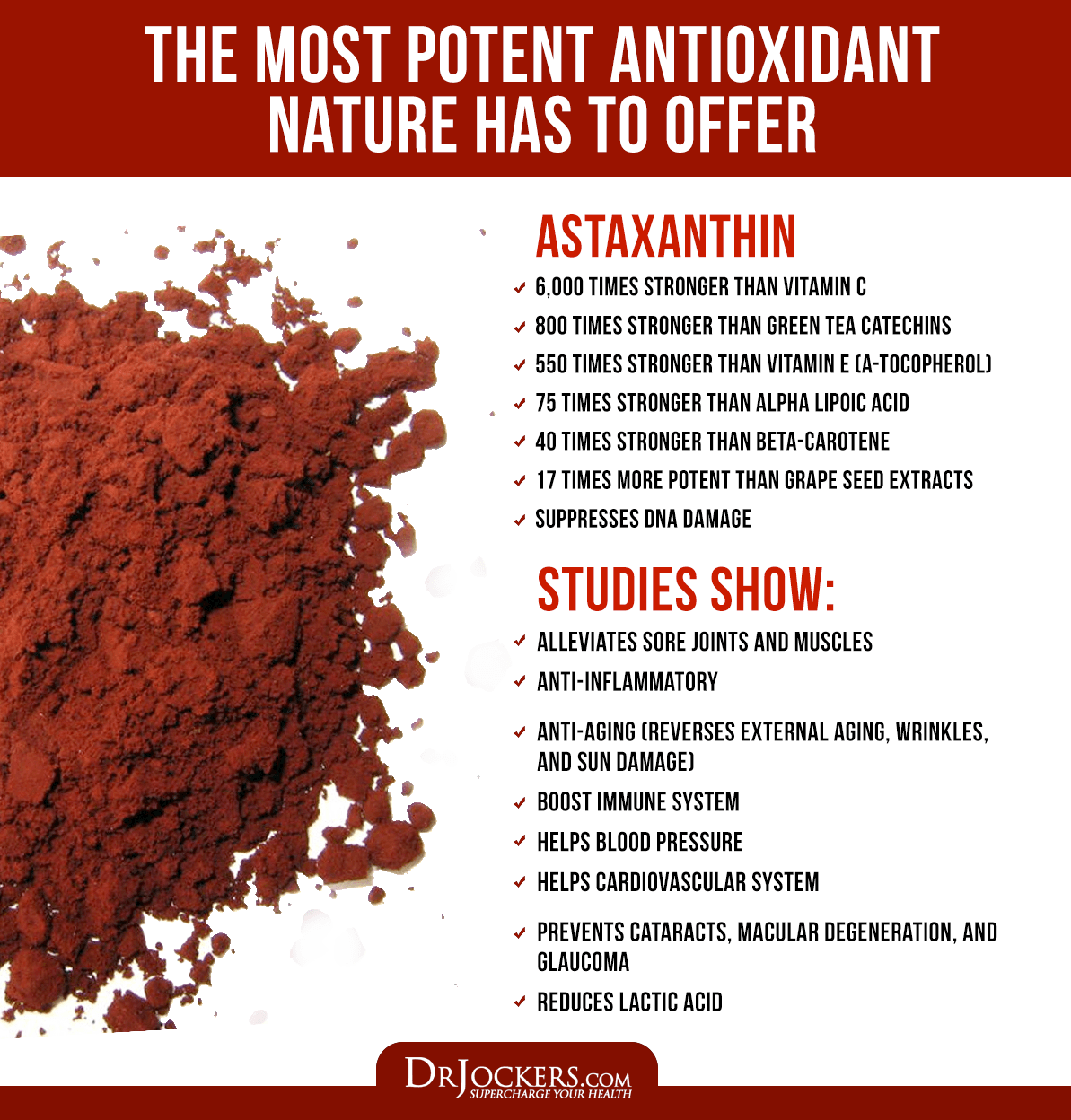
3 Major Health Benefits of Astaxanthin
Astaxanthin is a unique carotenoid antioxidant that gives seafood its pink color. This phytonutrient is produced naturally in specific algae that pass on its free radical scavenging effects to the sea animals that eat them. Astaxanthin is known to powerfully enhance brain function, eye health, immunity and joint function among other things.
The greatest natural source for astaxanthin is in the unique microalgae Haematococcus pluvialis. This microalga reproduces extraordinarily quickly, doubling in volume every week. These organisms have an amazing adaptive potential characterized by astaxanthin production which has allowed them to survive harsh environments over many years.
When H. pluvialis is grown commercially it goes through two major phases. The first phase is called the green phase where the algae are given an abundant source of nutrients that enhance cellular proliferation. During the red phase the cells undergo nutrient deprivation and are simultaneously exposed to intense sunlight.
This process of stress and scarcity induces something called encystment. This causes the cells to generate massive amounts of astaxanthin as a protective mechanism against environmental stress.

Wild Salmon vs. Farmed Salmon
Wild salmon naturally feed on red algae and accumulate astaxanthin within their muscle tissue giving them their characteristic pinkish-red color. Astaxanthin provides incredible antioxidant protection that gives them the amazing strength and endurance to swim up rivers and waterfalls. Flamingos are white until they consume enough shrimp and algae that concentrates the astaxanthin pigment within their tissue.
Farm-raised salmon are fed genetically modified grains and dead animal parts. This is unnatural but inexpensive feed. The result is a sick fish that comes out with a grayish-white flesh. In order to make it look a more appealing pink the fish farms use synthetic astaxanthin that is produced from toxic petrochemical sources. This chemical based coloring along with the toxic feed and medical interventions such as anti-biotic treatments are why the majority of farm-raised salmon is highly toxic.
Astaxanthin Protects the Brain:
Astaxanthin has the unique ability to cross the blood brain barrier as well as the blood-retinal barrier while most carotenoids do not. This helps protect the brain and eyes from inflammatory damage and reduces the risk for blindness, cataracts, macular degeneration, dementia, Alzheimer’s disease and other neurological disorders (1).
Studies have shown astaxanthin’s antioxidant capacity to be 65 times more powerful than vitamin C, 54 times stronger than beta-carotene and 15 times the strength of vitamin E. Other studies have tested astaxanthin’s ability to quench a singlet oxygen molecule.
These studies have shown results indicating astaxanthin to be 550 times more powerful than Vitamin E, 800 times stronger than CoQ10, 6000 times the strength of vitamin C, 550 times more powerful than epigallocatechin gallate (EGCG) and eleven times stronger than beta-carotene (2, 3, 4).
Astaxanthin Protects Cell Membranes:
Astaxanthin works particularly well against peroxyl radicals that damage lipid cell membranes in a process called lipid peroxidation. This is particularly important because all essential fats but, in-particular, long-chain omega 3 fatty acids such as EPA and DHA are very fragile and susceptible to free radical damage.
These omega 3 fatty acids are very critical parts of the trillions of cells in our body because they make up our cell membrane and are vital for hormone receptor function. When these fats become damaged due to oxidative stress they cause dysfunctional hormonal activity and chronic inflammation in the body. Astaxanthin is one the most powerful antioxidants at inhibiting the oxidation of these essential fats (5, 6).
Astaxanthin Improves Recovery Time:
Astaxanthin is one of the best supplements for athletes and individuals living active lifestyles. It is known to increase overall strength and stamina as evidenced in the ability for wild salmon to swim upstream. Studies have shown that it has a beneficial effect on muscle damage and the ability to buffer oxidative stress in athletes. This effect was shown to reduce recovery time and minimize joint and muscle soreness after a challenging training session (7, 8).
Ideal astaxanthin consumption appears to be about 4-8 mg/daily. This is equivalent to 4-8 oz. of wild Alaskan pink salmon. Most individuals are not able to consume this number of wild salmon daily and therefore supplementation is recommended. This is a great supplement to take here.
If you want to find great wild-caught Alaskan salmon and other pasture-raised meat products, US Wellness Meats is a great source here.







Read article on the benefits of Astaxanthin. Sounds like it is valuable supplement to take. Thank you for the article.